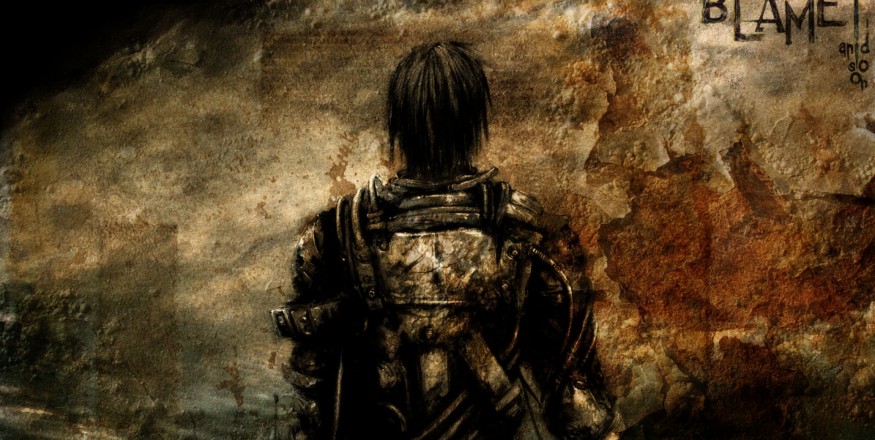The Lesser Key of Solomon, also known as Clavicula Salomonis Regis or Lemegeton, is an anonymous grimoire (or spell book) on demonology. It was compiled in the mid-17th century, mostly from materials a couple of centuries older. It is divided into five books—the Ars Goetia, Ars Theurgia-Goetia, Ars Paulina, Ars Almadel, and Ars Notoria.1114Please respect copyright.PENANArJQpJCoLdt
Ars Goetia1114Please respect copyright.PENANADsmlYpuf1q
The most obvious source for the Ars Goetia is Johann Weyer's Pseudomonarchia Daemonum in his De praestigiis daemonum. Weyer does not cite, and is unaware of, any other books in the Lemegeton, indicating that the Lemegeton was derived from his work, not the other way around. The order of the spirits was changed between the two, four additional spirits were added to the later work, and one spirit (Pruflas) was omitted. The omission of Pruflas, a mistake that also occurs in an edition of Pseudomonarchia Daemonum cited in Reginald Scot's The Discoverie of Witchcraft, indicates that the Ars Goetia could not have been compiled before 1570. Indeed, it appears that the Ars Goetia is more dependent upon Scot's translation of Weyer than Weyer's work in itself. Additionally, some material was used from Heinrich Cornelius Agrippa's Three Books of Occult Philosophy, the Heptameron by pseudo-Pietro d'Abano, and the Magical Calendar.
Weyer's Officium Spirituum, which is likely related to a 1583 manuscript titled The Office of Spirits, appears to have ultimately been an elaboration on a 15th-century manuscript titled Le Livre des Esperitz (of which 30 of its 47 spirits are nearly identical to spirits in the Ars Goetia).
In a slightly later copy made by Thomas Rudd, this portion was labelled "Liber Malorum Spirituum seu Goetia", and the seals and demons were paired with those of the 72 angels of the Shemhamphorasch, who were intended to protect the conjurer and control the demons he summoned. The angelic names and seals were derived from a manuscript by Blaise de Vigenère, whose papers were also used by Samuel Liddell MacGregor Mathers in his works for the Hermetic Order of the Golden Dawn. Rudd may have derived his copy of Liber Malorum Spirituum from a now-lost work by Johannes Trithemius, who taught Agrippa, who in turn taught Weyer.
This portion of the work was later translated by S. L. MacGregor Mathers and published by Aleister Crowley under the title The Book of the Goetia of Solomon the King. Crowley added some additional invocations previously unrelated to the original work, as well as essays describing the rituals as psychological exploration instead of demon summoning.1114Please respect copyright.PENANAy059YmdFXk
The Seventy-Two Demons
The demons' names (given below) are taken from the Ars Goetia, which differs in terms of number and ranking from the Pseudomonarchia Daemonum of Weyer. As a result of multiple translations, there are multiple spellings for some of the names, which are given in the articles concerning them.
1) King Bael1114Please respect copyright.PENANA6YQeJm2mhj
2) Duke Agares1114Please respect copyright.PENANALAfc5kEgda
3) Prince Vassago1114Please respect copyright.PENANANxDhEwt9q7
4) Marquis Samigina1114Please respect copyright.PENANAgElNMMguSa
5) President Marbas1114Please respect copyright.PENANAEaPwa1jKlQ
6) Duke Valefor1114Please respect copyright.PENANABgP3kfp5qV
7) Marquis Amon1114Please respect copyright.PENANAUKrmOQIHMT
8) Duke Barbatos1114Please respect copyright.PENANA8YiaUgOxFP
9) King Paimon1114Please respect copyright.PENANAINMK1nu1IY
10) President Buer1114Please respect copyright.PENANA6DTXxEIsSe
11) Duke Gusion1114Please respect copyright.PENANA6NgetEoXwR
12) Prince Sitri1114Please respect copyright.PENANAWlhtkAsqZZ
13) King Beleth1114Please respect copyright.PENANAgflcjElIW9
14) Marquis Leraje1114Please respect copyright.PENANApPdI9kQB0J
15) Duke Eligos1114Please respect copyright.PENANAEp5x8QWZDG
16) Duke Zepar1114Please respect copyright.PENANAZh8QewXURj
17) Count/President Botis1114Please respect copyright.PENANAWA9O6vvEc4
18) Duke Bathin1114Please respect copyright.PENANANDgxnPvZBJ
19) Duke Sallos1114Please respect copyright.PENANAX9m82ioG6y
20) King Purson1114Please respect copyright.PENANABdPYWvCKOS
21) Count/President Marax1114Please respect copyright.PENANA3ln6HoF7ug
22) Count/Prince Ipos1114Please respect copyright.PENANAfXys3uCKB3
23) Duke Aim1114Please respect copyright.PENANA2w71QyUqcO
24) Marquis Naberius1114Please respect copyright.PENANAlhi8iyCMsN
25) Count/President Glasya-Labolas1114Please respect copyright.PENANArZLhAgGiVj
26) Duke Buné1114Please respect copyright.PENANA58O36pqu3l
27) Marquis/Count Ronové1114Please respect copyright.PENANAXQmMN8PhmF
28) Duke Berith1114Please respect copyright.PENANATDyzoM9A6S
29) Duke Astaroth1114Please respect copyright.PENANAZ5zPQ2vMWn
30) Marquis Forneus1114Please respect copyright.PENANAxqsY1azC37
31) President Foras1114Please respect copyright.PENANAouqNp7xTsN
32) King Asmoday1114Please respect copyright.PENANA6pyidlStT7
33) Prince/President Gäap1114Please respect copyright.PENANApElfR7iN62
34) Count Furfur1114Please respect copyright.PENANAintXU9IURu
35) Marquis Marchosias1114Please respect copyright.PENANApLmBIPj89a
36) Prince Stolas1114Please respect copyright.PENANAgWm0CjmfNa
37) Marquis Phenex1114Please respect copyright.PENANAX9eKouyy1y
38) Count Halphas1114Please respect copyright.PENANAcZDp2o8qLj
39) President Malphas1114Please respect copyright.PENANArg4CIiBYcr
40) Count Räum1114Please respect copyright.PENANAovAZf5jwPW
41) Duke Focalor1114Please respect copyright.PENANAjSq5eOXwHy
42) Duke Vepar1114Please respect copyright.PENANAAavxMr4bVQ
43) Marquis Sabnock1114Please respect copyright.PENANA24bw951SAN
44) Marquis Shax1114Please respect copyright.PENANA8SckPZDASO
45) King/Count Viné1114Please respect copyright.PENANA5S2tPslMzb
46) Count Bifrons1114Please respect copyright.PENANADxWmrJmHPL
47) Duke Vual1114Please respect copyright.PENANAcf4ppGNh1P
48) President Haagenti1114Please respect copyright.PENANAHrvdAgz2rc
49) Duke Crocell1114Please respect copyright.PENANAVNRjTzhROc
50) Knight Furcas1114Please respect copyright.PENANAz7dODYLHgb
51) King Balam1114Please respect copyright.PENANA80qVq8ANuL
52) Duke Alloces1114Please respect copyright.PENANAE7qmlL6D8D
53) President Caim1114Please respect copyright.PENANAsnukJesrr1
54) Duke/Count Murmur1114Please respect copyright.PENANAW8cxPBbjtn
55) Prince Orobas1114Please respect copyright.PENANAaybNRid0kl
56) Duke Gremory1114Please respect copyright.PENANAHOpdIyXKOa
57) President Ose1114Please respect copyright.PENANAELoczVKwdu
58) President Amy1114Please respect copyright.PENANAWnrKfQxZ3Y
59) Marquis Orias1114Please respect copyright.PENANArg2n6OOz4q
60) Duke Vapula1114Please respect copyright.PENANAQPyrthNUc3
61) King/President Zagan1114Please respect copyright.PENANAleOLlmOsQq
62) President Valac1114Please respect copyright.PENANAVOM5AVT3g3
63) Marquis Andras1114Please respect copyright.PENANAWALUtkWjX5
64) Duke Flauros1114Please respect copyright.PENANA2RJJcDUKb9
65) Marquis Andrealphus1114Please respect copyright.PENANAU5T8zW0uRi
66) Marquis Kimaris1114Please respect copyright.PENANAbv23P6GEiI
67) Duke Amdusias1114Please respect copyright.PENANAGB7gW7FuGS
68) King Belial1114Please respect copyright.PENANAl70X2gLsQF
69) Marquis Decarabia1114Please respect copyright.PENANAkjSOJqpxpl
70) Prince Seere1114Please respect copyright.PENANAathL2KzKP9
71) Duke Dantalion1114Please respect copyright.PENANAThtlO8L0Eg
72) Count Andromalius
The demons are described as being commanded by four kings of the cardinal directions: Amaymon (East), Corson (West), Ziminiar (North), and Gaap (South). A footnote in one variant edition instead lists them as Oriens or Uriens, Paymon or Paymonia, Ariton or Egyn, and Amaymon or Amaimon, alternatively known as Samael, Azazel, Azael, and Mahazael (purportedly their preferred rabbinic names).[10] Agrippa's Occult Philosophy lists the kings of the cardinal directions as Urieus (East), Amaymon (South), Paymon (West), and Egin (North); again providing the alternate names Samuel (i.e. Samael), Azazel, Azael, and Mahazuel. The Magical Calendar lists them as Bael, Moymon, Poymon, and Egin, though Peterson notes that some variant editions instead list '"Asmodel in the East, Amaymon in the South, Paymon in the West, and Aegym in the North"; "Oriens, Paymon, Egyn, and Amaymon"; or "Amodeo [sic] (king of the East), Paymon (king of the West), Egion (king of the North), and Maimon."1114Please respect copyright.PENANAgvIW5GmPKH
Ars Theurgia Goetia1114Please respect copyright.PENANAtbW7ZJdjQ9
The Ars Theurgia Goetia mostly derives from Trithemius's Steganographia, though the seals and order for the spirits are different due to corrupted transmission via manuscript. Rituals not found in Steganographia were added, in some ways conflicting with similar rituals found in the Ars Goetia and Ars Paulina. Most of the spirits summoned are tied to points on a compass, four Emperors tied to the cardinal points (Carnesiel in the East, Amenadiel in the West, Demoriel in the North and Caspiel in the South), sixteen Dukes tied to cardinal points, inter-cardinal points, additional directions between those. There are an additional eleven Wandering Princes, totaling thirty one spirit leaders who each rule several to a few dozen spirits.1114Please respect copyright.PENANAHkHUIAh8PI
1114Please respect copyright.PENANAkCN3OT1uyX
Ars Paulina1114Please respect copyright.PENANAiS1aXS7LER
Derived from book two of Trithemius's Steganographia and from portions of the Heptameron, but purportedly delivered by Paul the Apostle instead of (as claimed by Trithemius) Raziel. Elements from The Magical Calendar, astrological seals by Robert Turner's 1656 translation of Paracelsus's Archidoxes of Magic, and repeated mentions of guns and the year 1641 indicate that this portion was written in the later half of the seventeenth century. Traditions of Paul communicating with heavenly powers are almost as old as Christianity itself, as seen in some interpretations of 2 Corinthians 12:2-4 and the apocryphal Apocalypse of Paul. The Ars Paulina is in turn divided into two books, the first detailing twenty-four angels aligned with the twenty-four hours of the day, the second (derived more from the Heptameron) detailing the 360 spirits of the degrees of the zodiac.1114Please respect copyright.PENANAfjQwqBG74S
Ars Almadel1114Please respect copyright.PENANAx78jTNPUIb
Mentioned by Trithemius and Weyer, the latter of whom claimed an Arabic origin for the work. A 15th-century copy is attested to by Robert Turner, and Hebrew copies were discovered in the 20th century. The Ars Almadel instructs the magician on how to create a wax tablet with specific designs intended to contact angels via scrying.1114Please respect copyright.PENANA2s2Dbu3tBV
Ars Notoria1114Please respect copyright.PENANAME38CBFULS
The oldest known portion of the Lemegeton, the Ars Notoria (or Notory Art) was first mentioned by Michael Scot in 1236 (and thus was written earlier). The Ars Notoria contains a series of prayers (related to those in The Sworn Book of Honorius) intended to grant eidetic memory and instantaneous learning to the magician. Some copies and editions of the Lemegeton omit this work entirely; A. E. Waite ignores it completely when describing the Lemegeton. It is also known as the Ars Nova.1114Please respect copyright.PENANA4QrMMwDbIL
1114Please respect copyright.PENANA0Smuv4sHeA
It has also been said to be the origin of Pandora's box and where the seven deadly sins were born.
1 Gula (gluttony)1114Please respect copyright.PENANApFlewcGfKf
2 Luxuria (lust, fornication)1114Please respect copyright.PENANAtc4RrHVxjd
3 Avaritia (avarice/greed)1114Please respect copyright.PENANAdFIbFE27jL
4 Superbia (pride, hubris)1114Please respect copyright.PENANADm5fTciahM
5 Invidia (Envy)1114Please respect copyright.PENANADyEpxKnuil
6 Ira (wrath)1114Please respect copyright.PENANApzeOZU7gq9
7 Acedia (sloth)1114Please respect copyright.PENANAF4OON7CXpS
If you look any further into it, beware your surrounding... You will uncover, the truth.
ns216.73.216.176da2

































